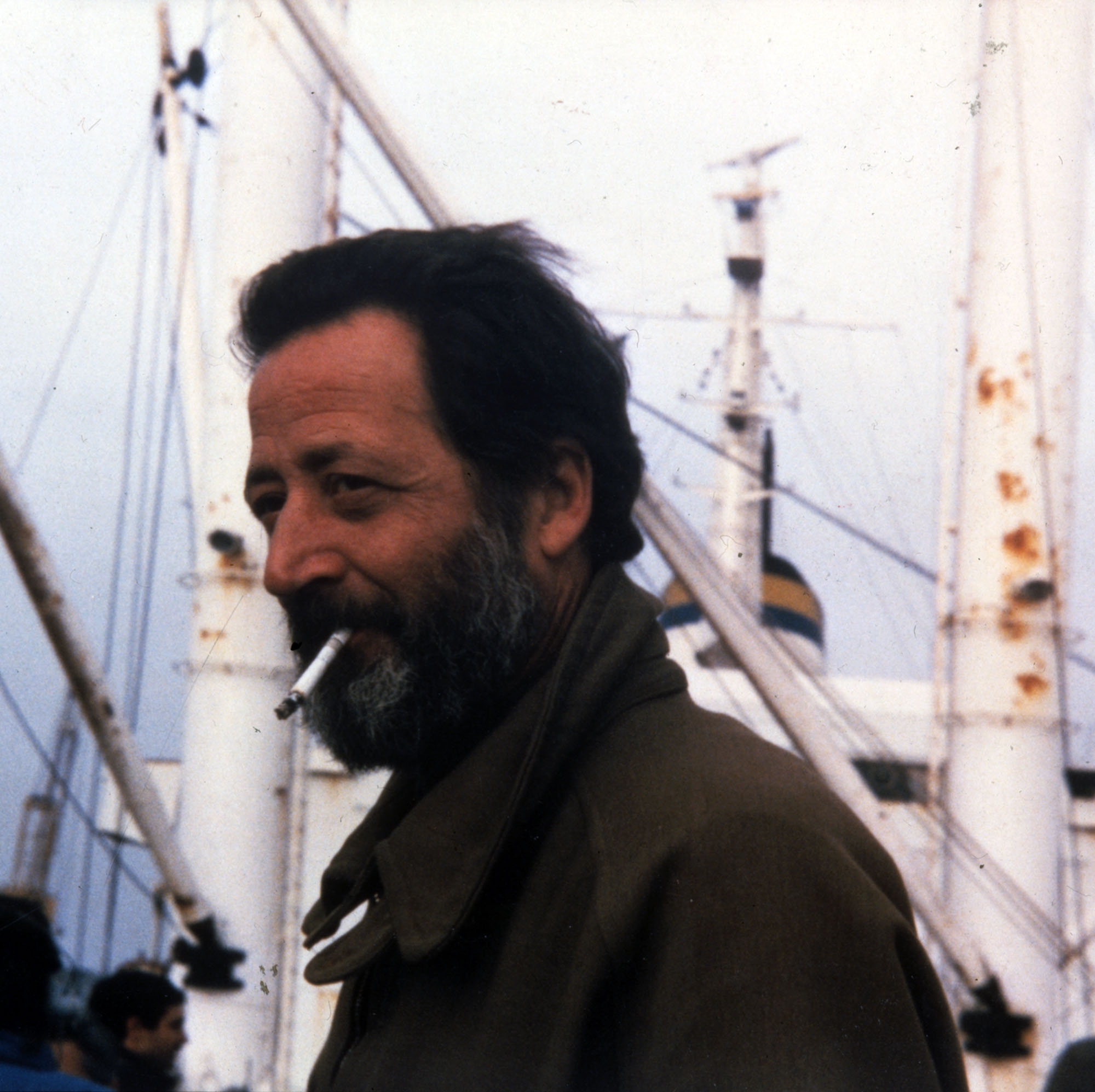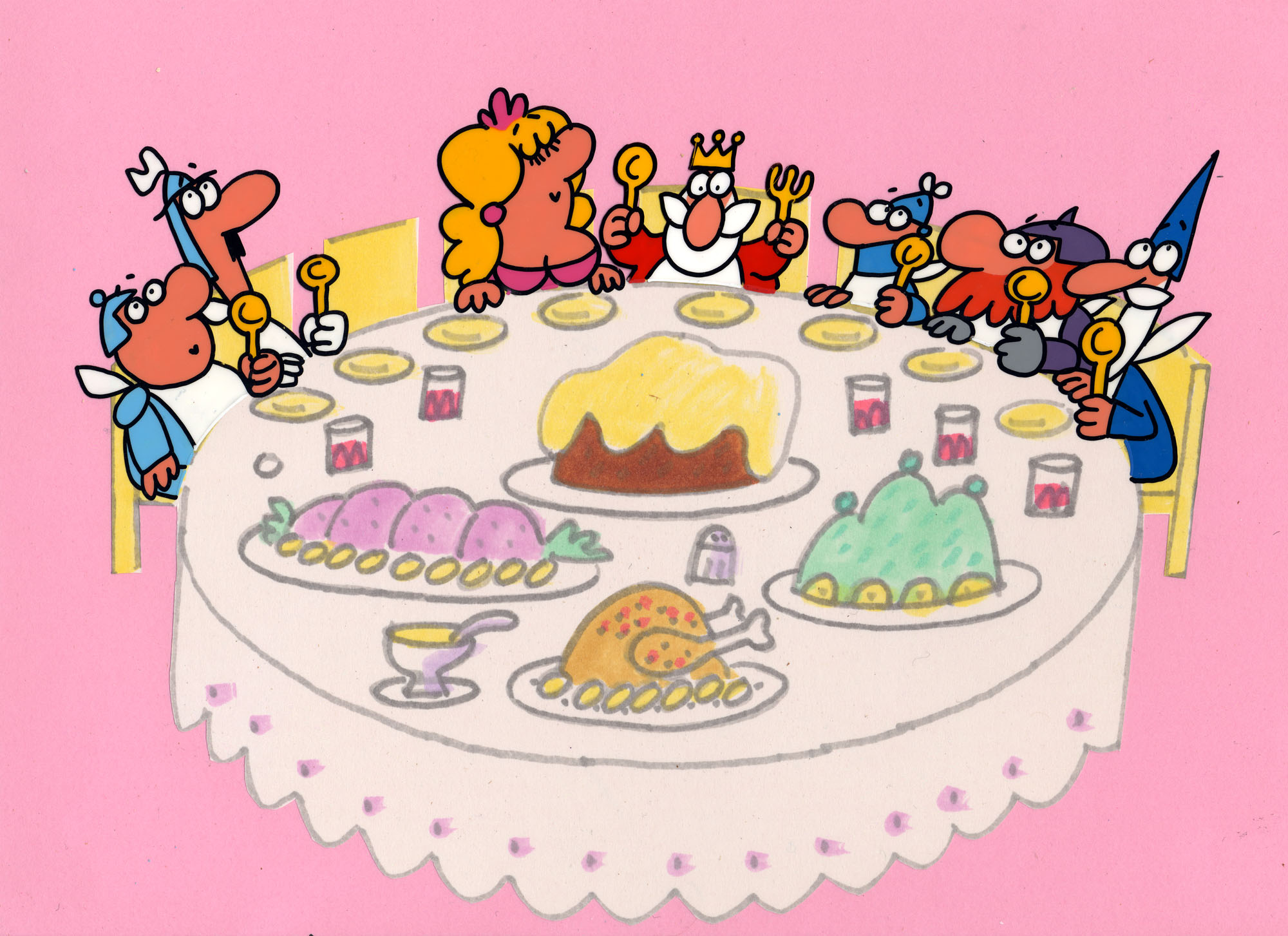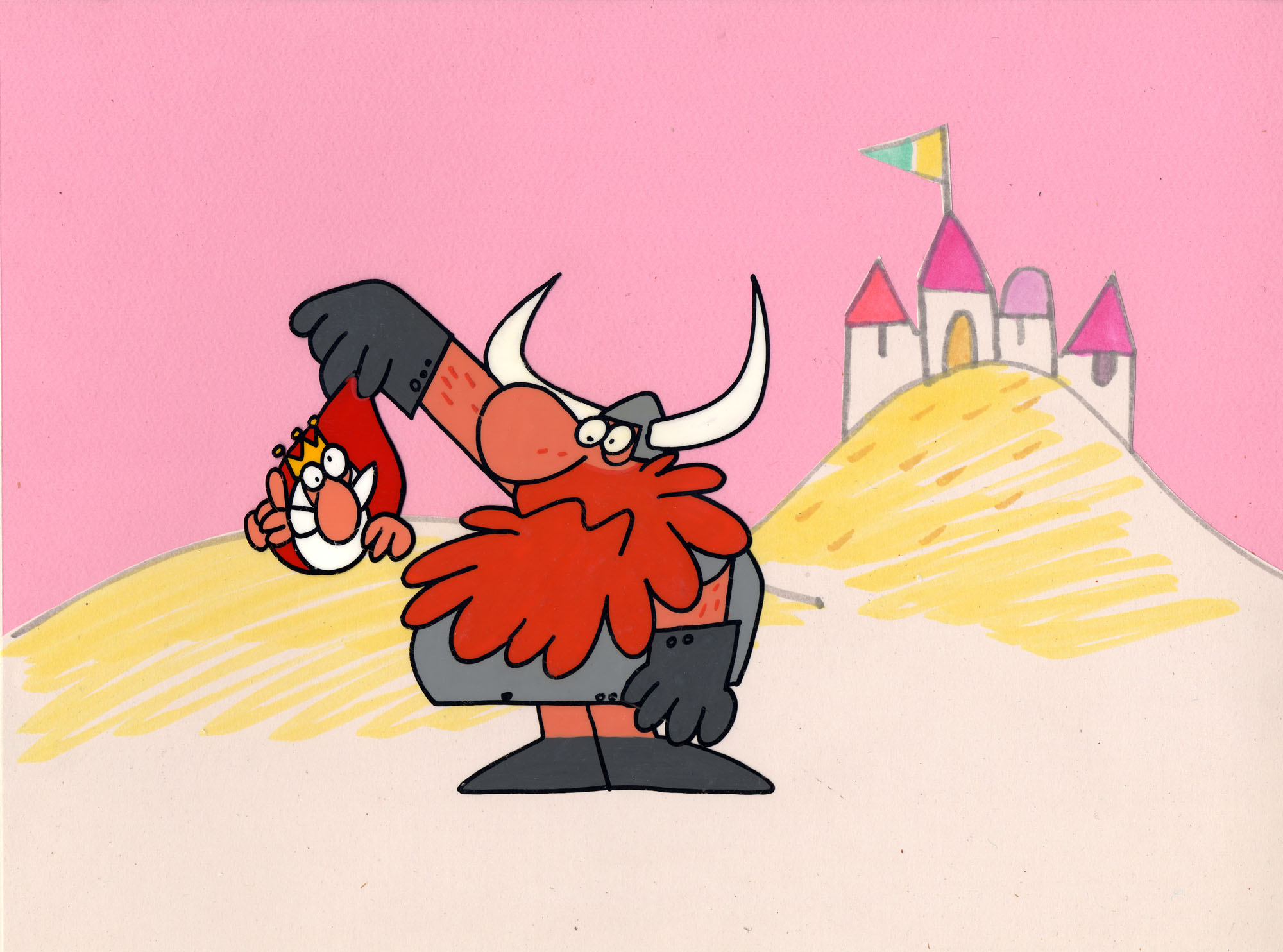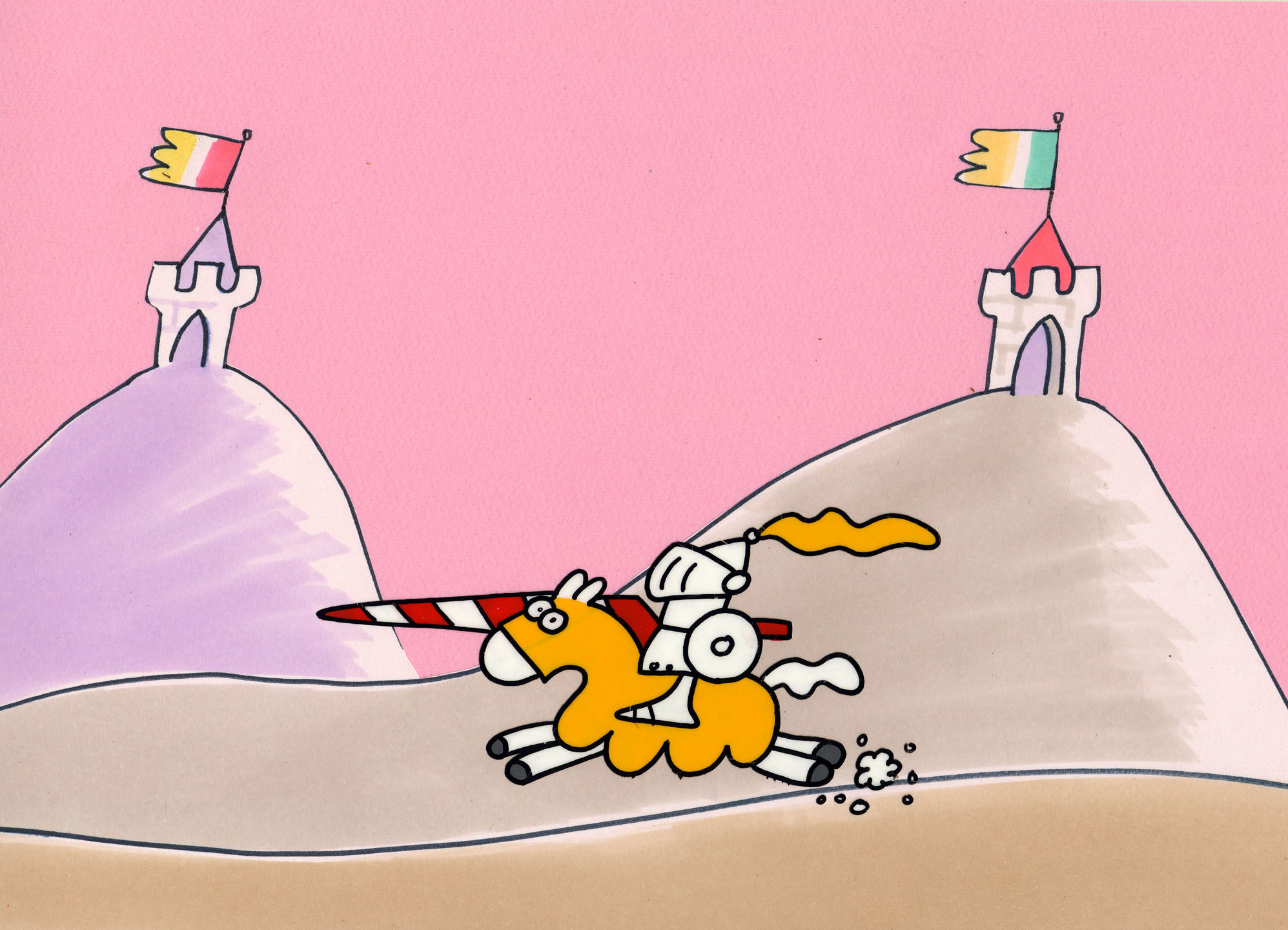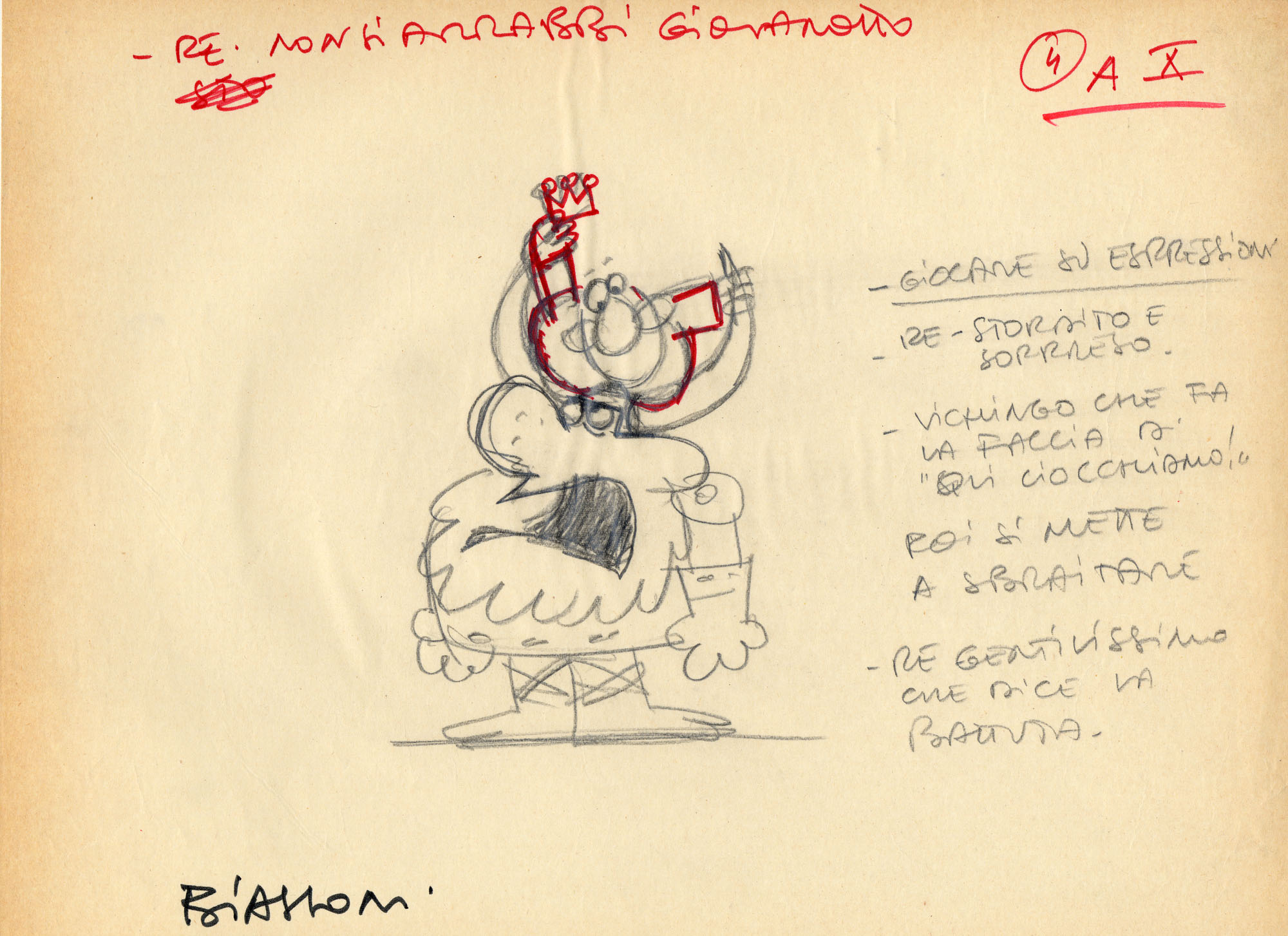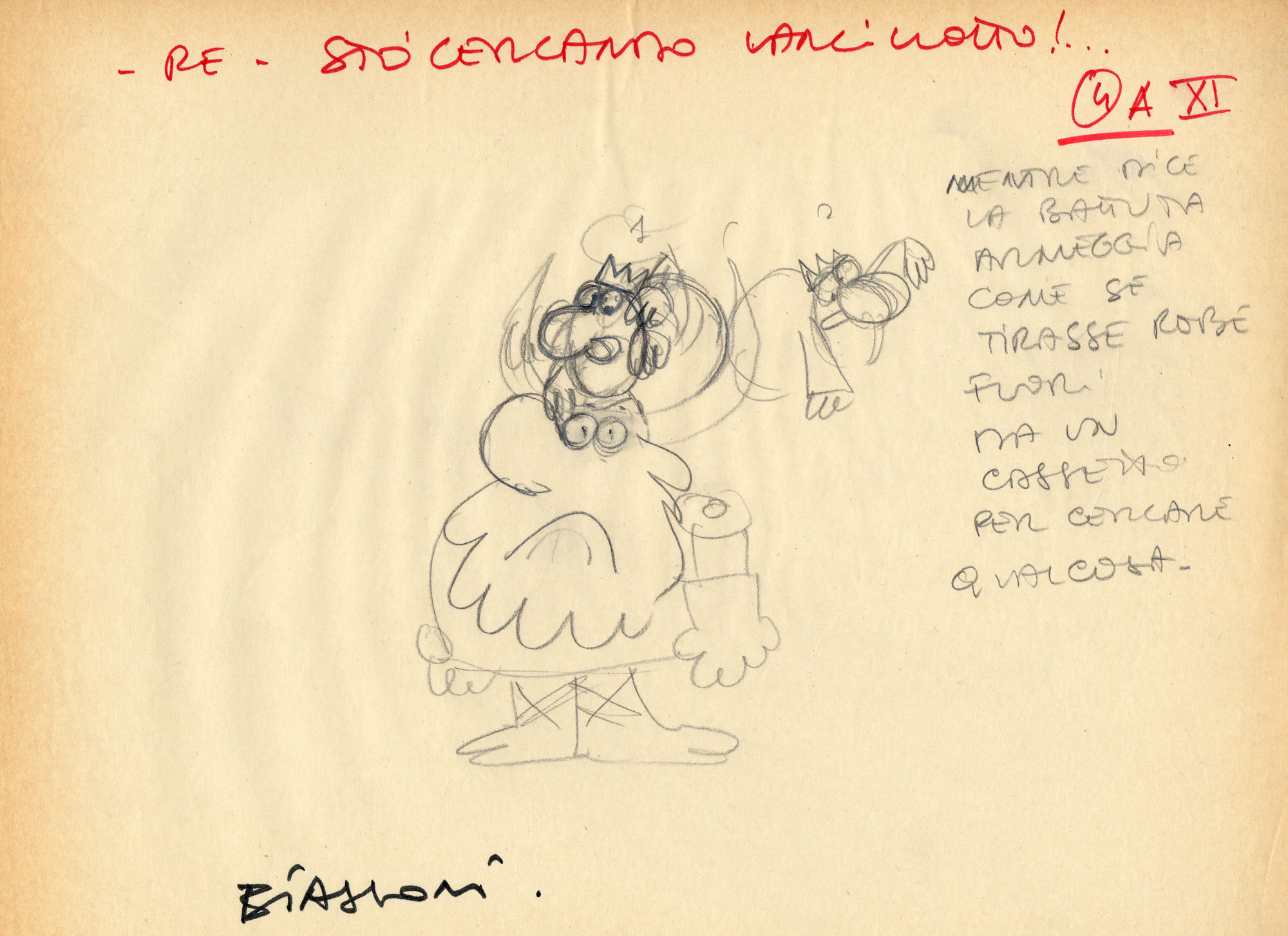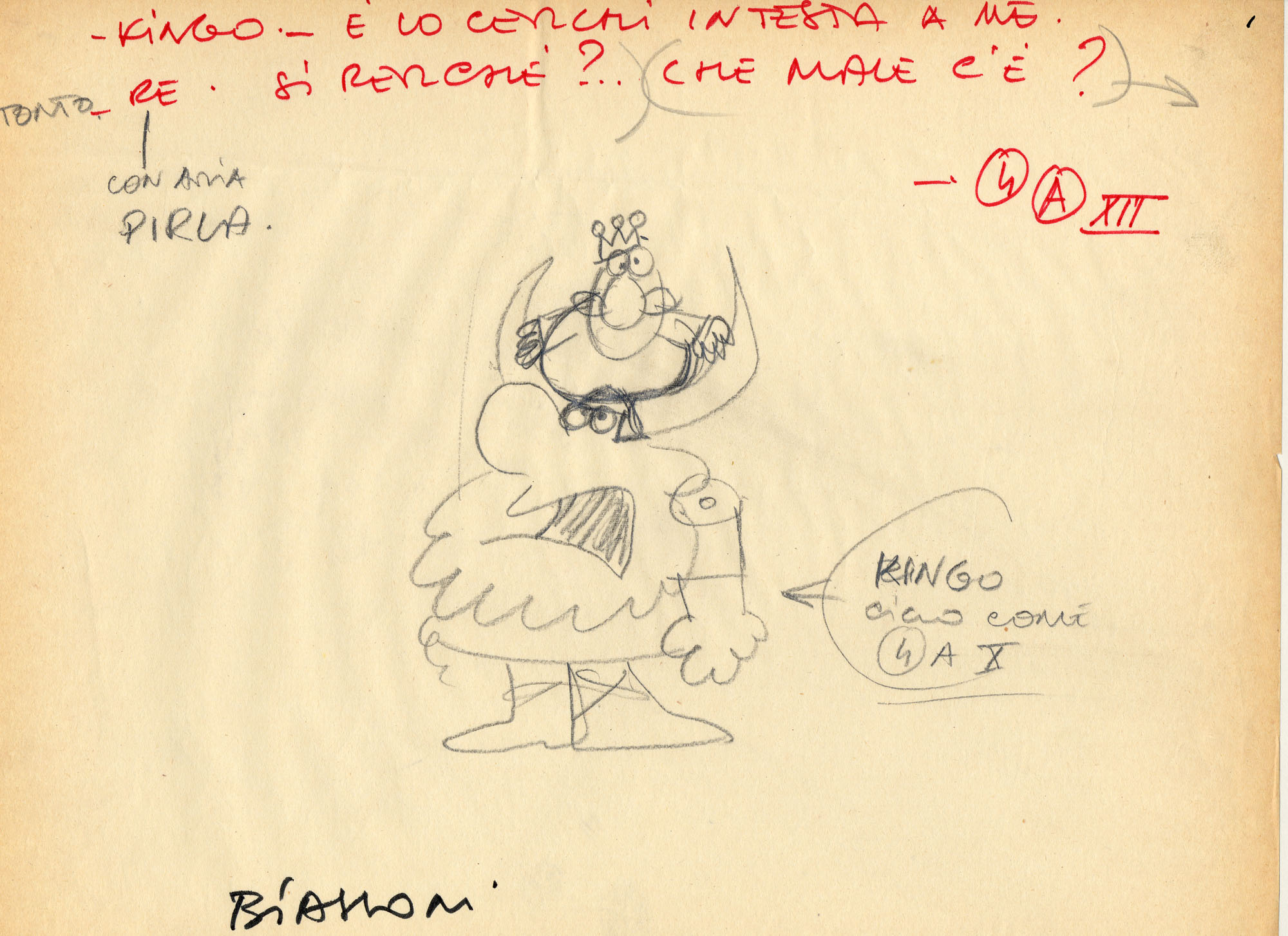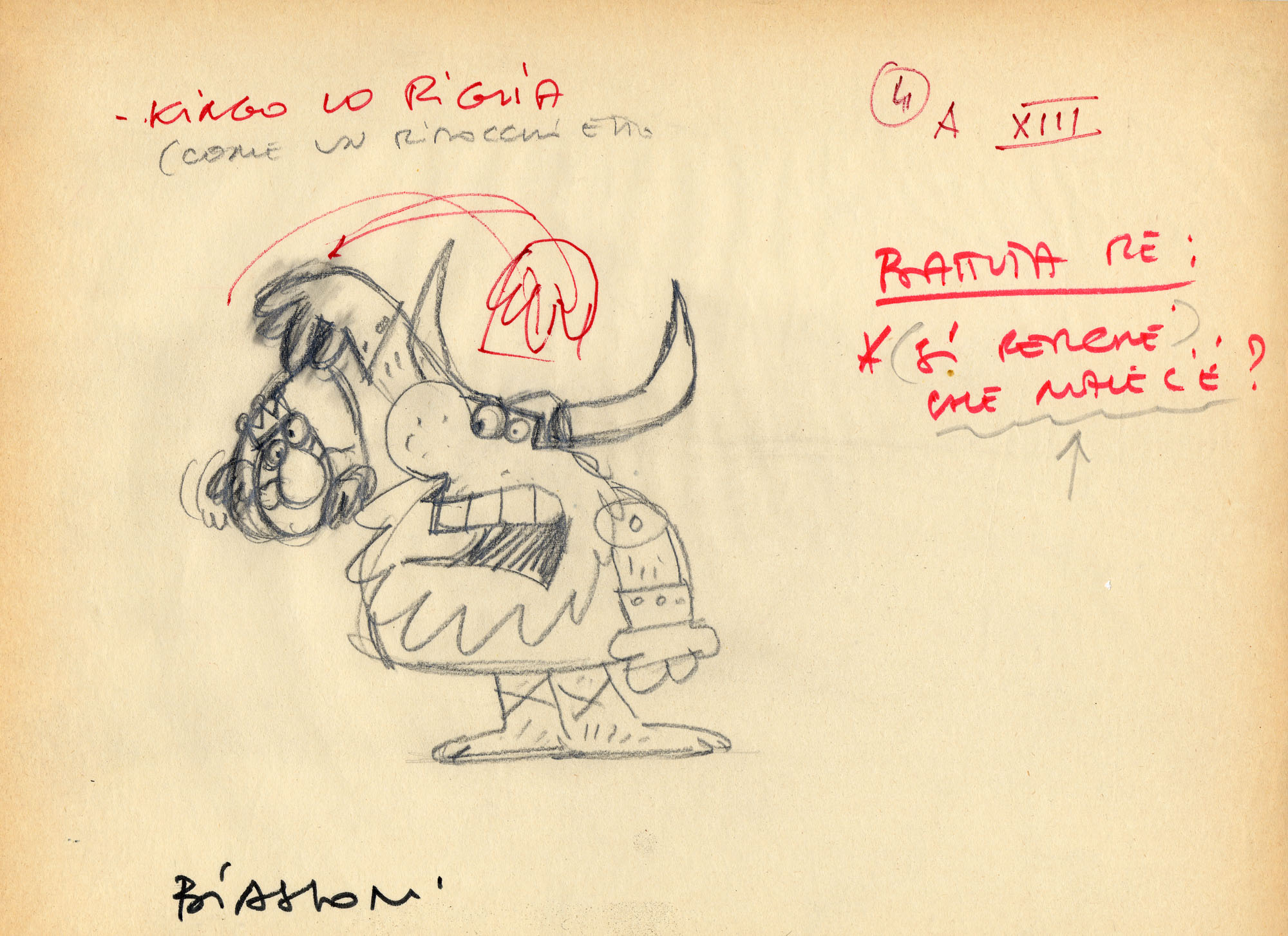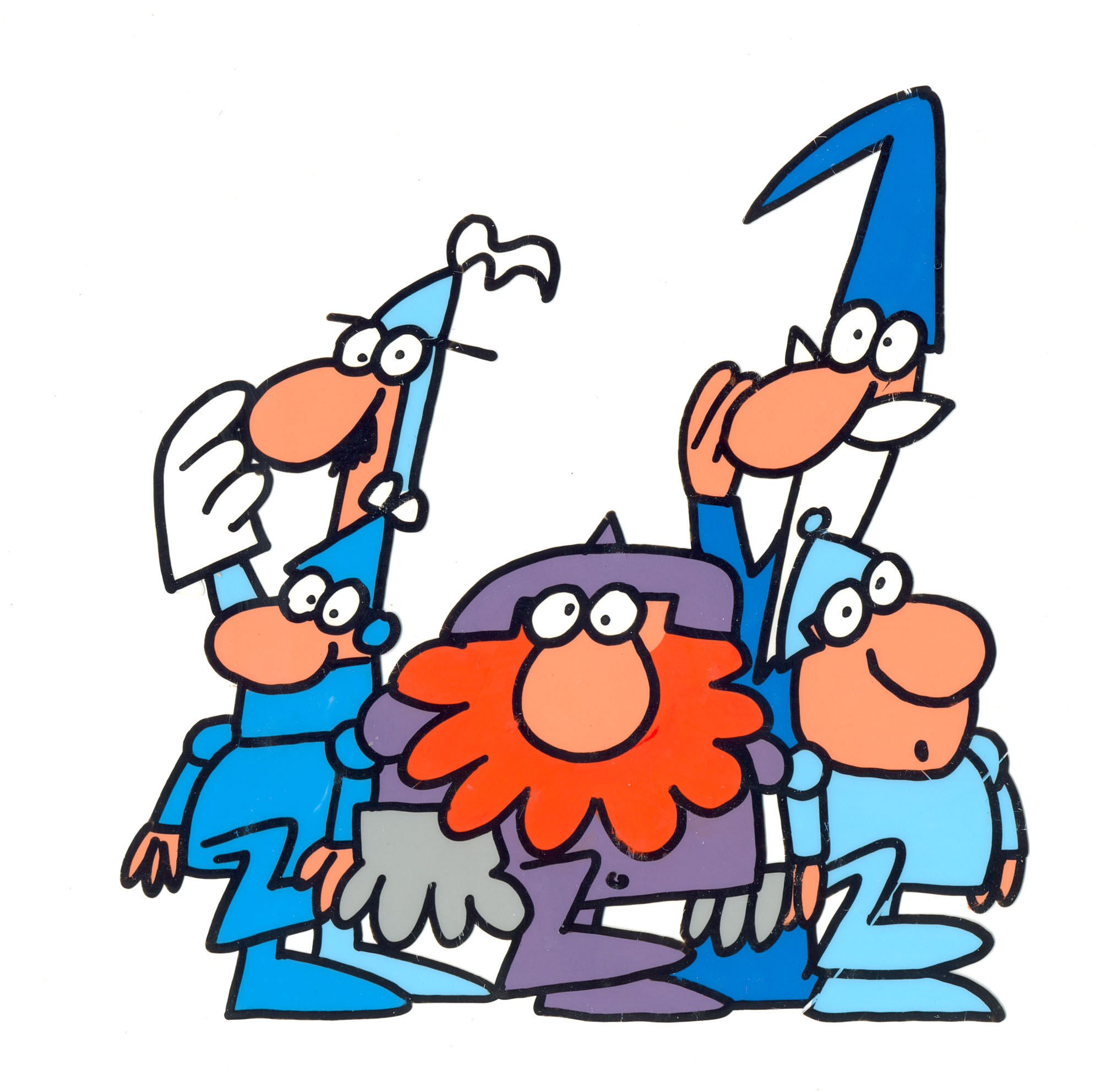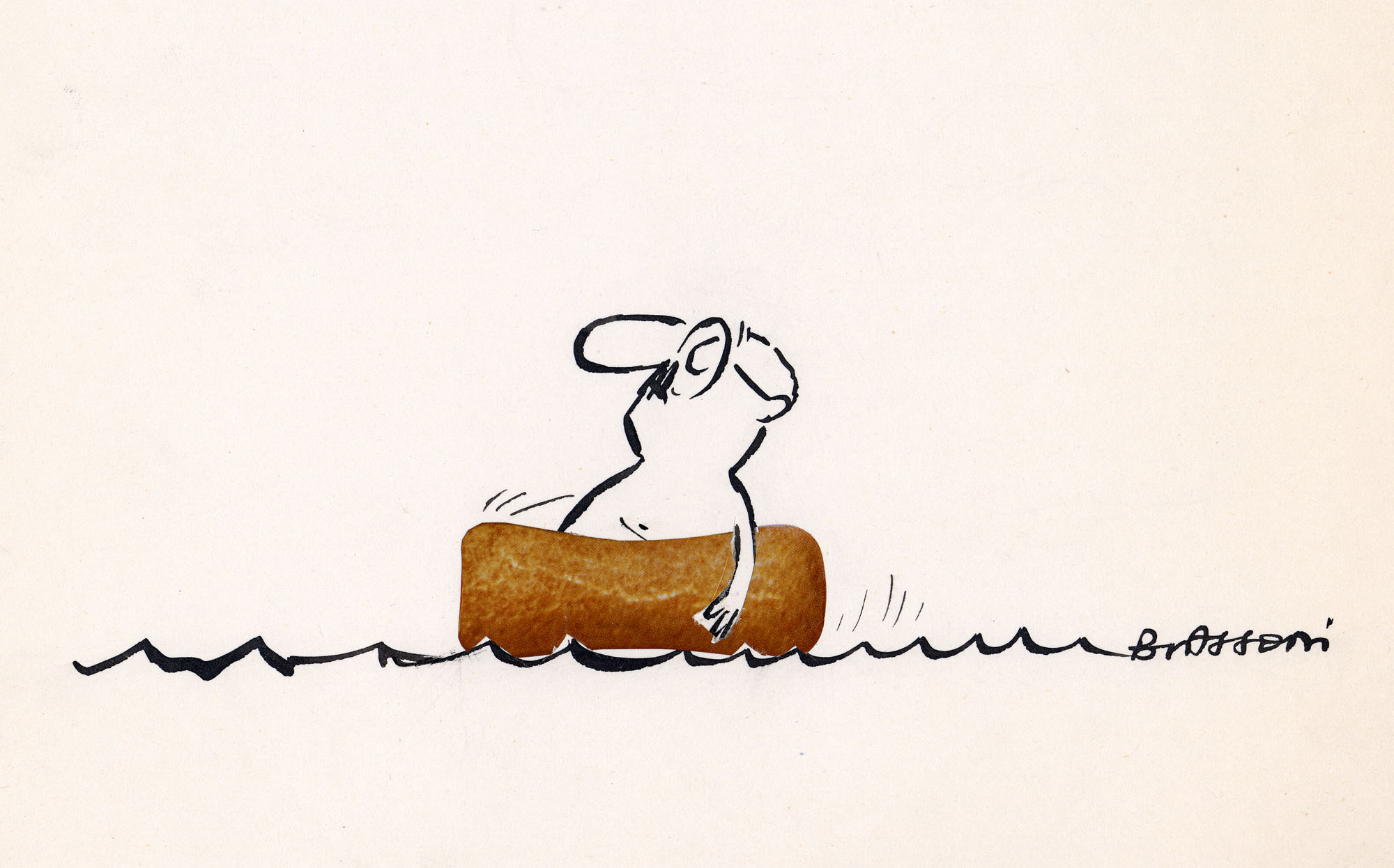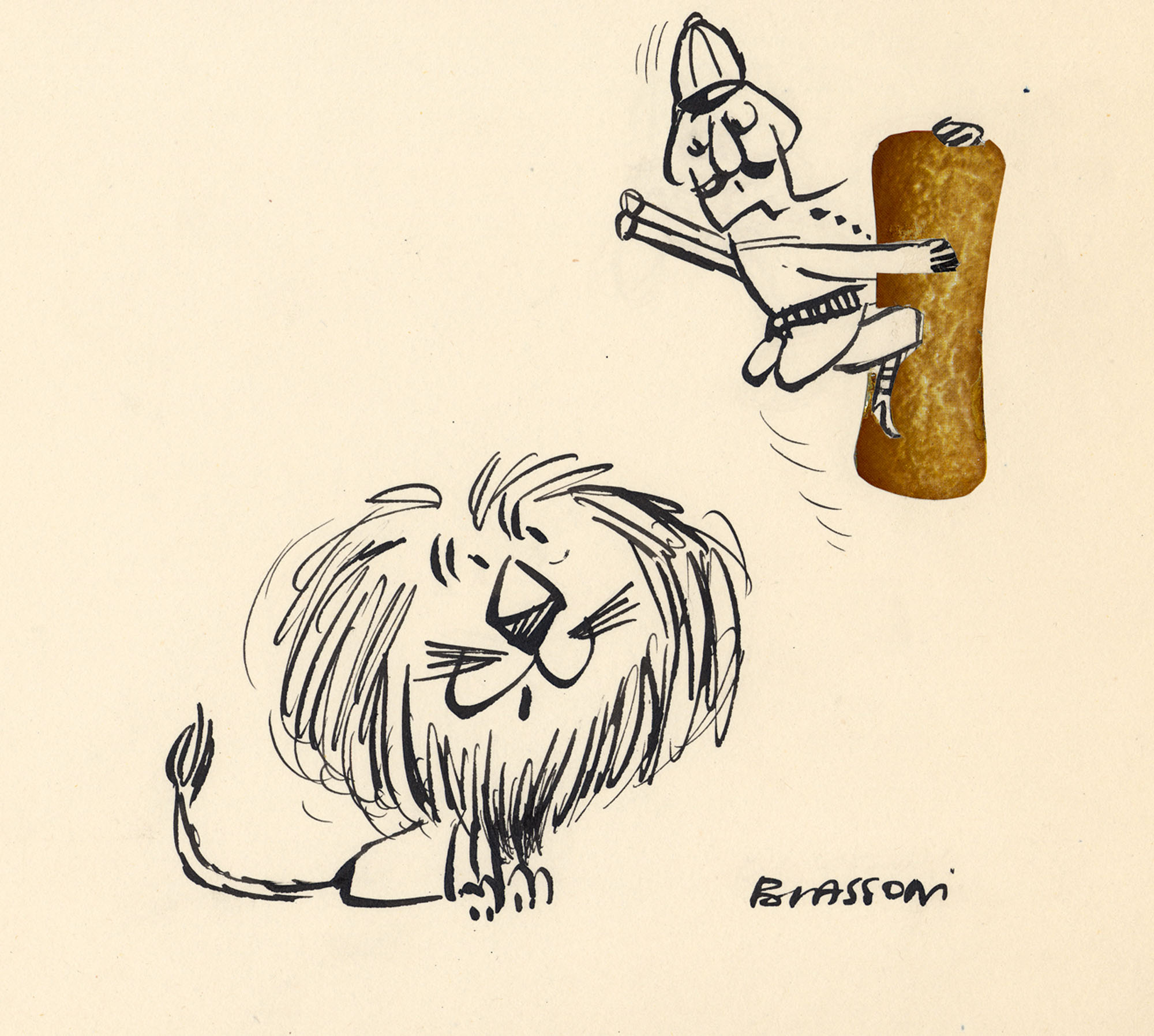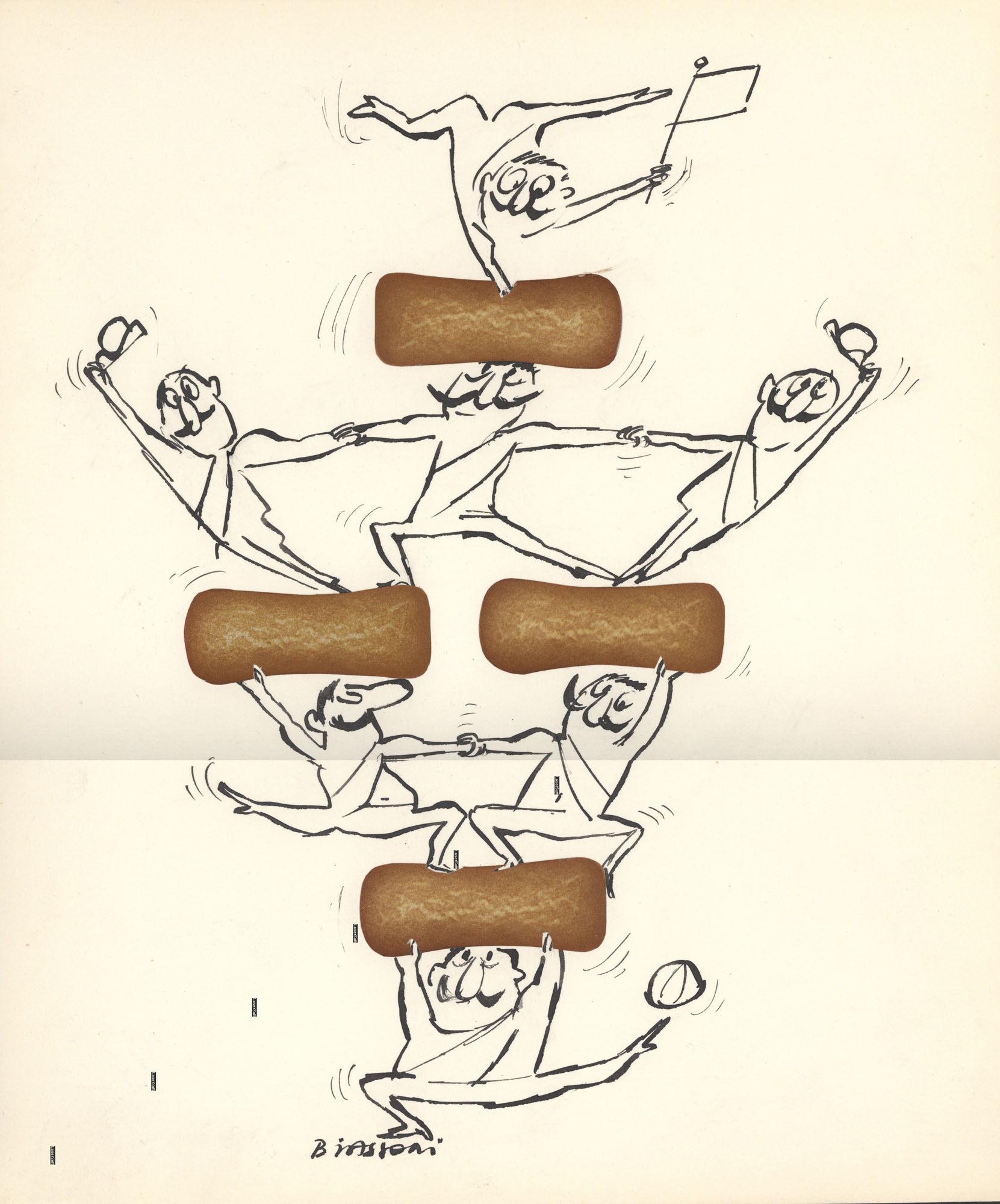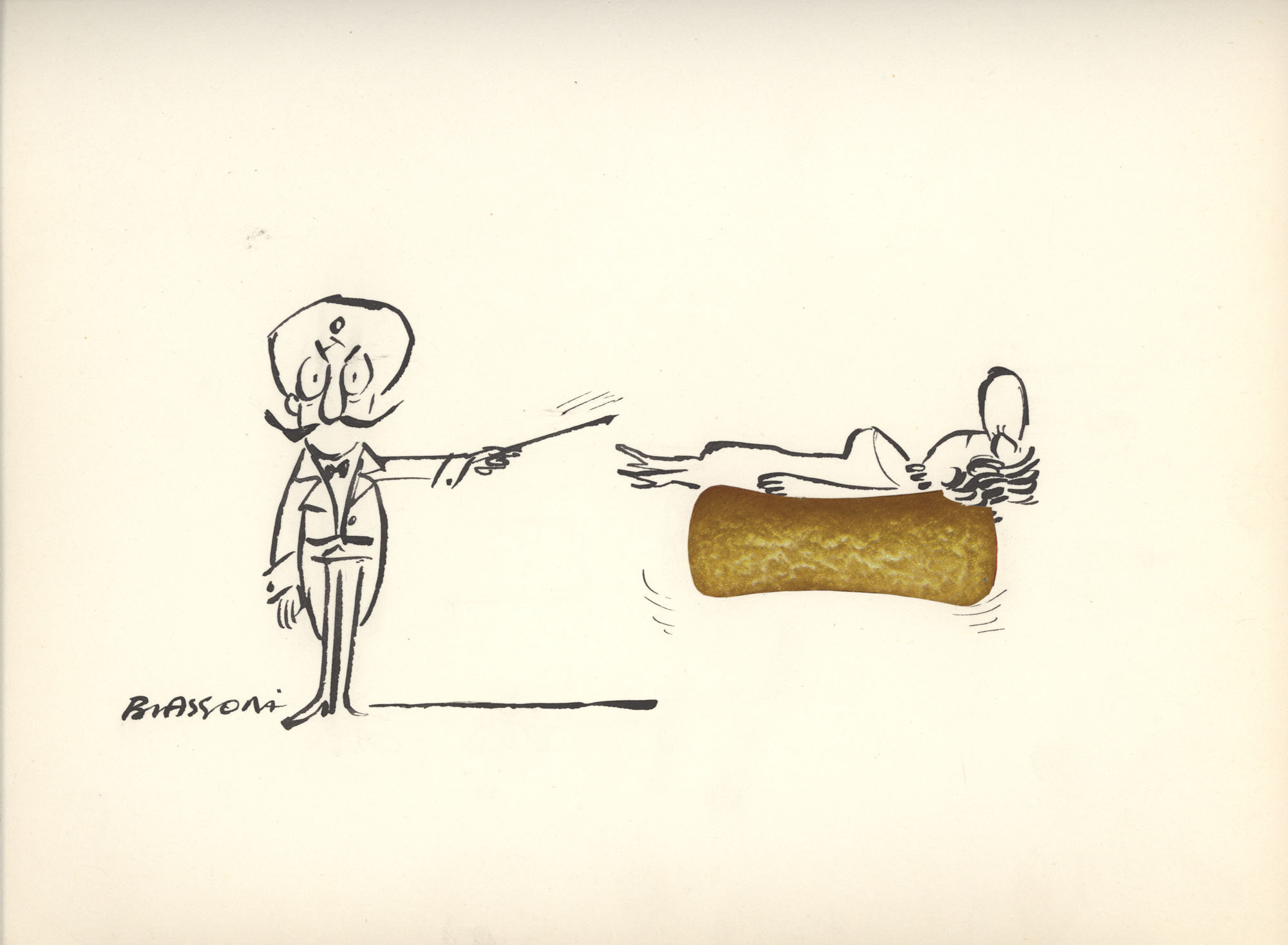Marco Biassoni and King Arthur
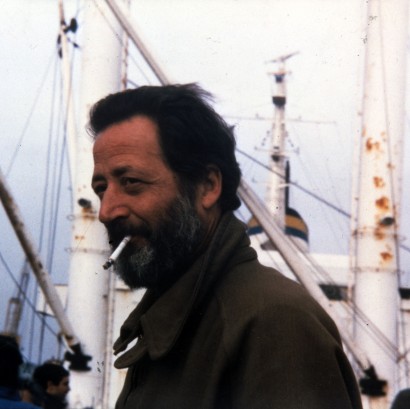
Marco Biassoni and King Arthur
Gian Paolo Ceserani
Biassoni is a last name from Milan: Marco Biassoni, however, was born in Genoa, where his family moved. He did not remain there for a long time: in 1960, at age 30, he moved to “his” Milan where his talent as a creative illustrator, that he had already shown, was with no doubts appreciated much more.
And so it was, indeed: he became one of the best cartoonist on the market, and one of the creative protagonists of Carosello1, by now considered a cult Italian TV show. His encounter with Gran Pavesi took place in 1964 but not for the Carosello spots: instead, it was with a series of color films, two of which received awards in Venice.
The name of those film segments was “Punto e linea”2 and this pun hinted at the film strategy: the line as basic promise for the product. These were very amusing films: three curvy ladies adrift on a raft made of crackers were intent on sending an S.O.S. using the dot-and-line Morse code, and at last were rescued by the Gran Pavesi ship that came to their help (another play on words with the “Gran Pavese”3!).
Immediately after that, the advertising Saga of the Round Table began. Where did the idea come from? It was already patrimony of Pavesi: in 1962, a campaign entitled “To the table! To the table! There is Gran Pavesi!” was launched and in the announcement the speaker said: “On the round table, on the square table, put Gran Pavesi”.
Biassoni started from this initial idea and built a real saga around it. His inventions, constantly brilliant, witty and immediate, had a strong impact for many years on collective imagination (from 1965 to 1975, that is a little before the final season of Carosello).
“How come in eight, are we not?” “Because we’re missing Lancelot!” This, Biassoni stated, was one of the catch phrases, as we used to call them then, that necessarily accompanied Carosello and made it memorable.
It was impossible to imagine a better way to synthesize the product positioning: the long series of Carosello spots always managed to soar over the typical and feared gap between “entertainment show” and “punch line”, that in turn included a catch phrase for all of the various advertising authors. The “table” was a strategic decision: this way the company positioned the product while avoiding to directly attack bread.
The success of a spot, of a real Carosello spot loved by the public, was measured in terms of how recognizable was its opening line. The trumpets announcing in a made up solemn tone the upcoming show were immediately recognizable. With slight variations, the initial ritual remained codified through the years: a blond and slightly overweight Ginevra, always accompanied by a large cake asked in a lamenting tone “How come in eight, are we not?” and a grumbling King Arthur answered her: “Because we’re missing Lancelot!”
Immediately after that, a knight launched to the quest of brave Lancelot, in a series adventures narrated in rhyme that were always different and always the same at one time. In these, there were witches, Saracens, a number of giants and aggressive knights (like the unforgettable fearsome Dwarf Knight).
The adventures did not lack some entertaining inner variations. In one of them the entire knight brigade, including King Arthur, moved to Egypt, where they met Jeremy the hermit and a ferocious ogre; in another Carosello spot (1969) a singing Robin Hood appeared; in another one (1971) the knights of the round table answered the king: “O King, you will have to go search for Lancelot by yourself “ and King Arthur ventured even into modern traffic, driving a sort of car and getting inevitably fined by traffic police in the end.
At the end of each adventure, of course “Our” Lancelot arrived in person, galloping on a horse, defeated the villains and “wreaked havoc”4.
The rhyming strophes were enchanting and the collection array of rhymes ending in “otto” required to make the catch phrase work was extraordinary, as King Arthur kept asking: “Yes, that’s fine, but Lancelot?” And there came: ghiotto (gluttonous), rotto (broken), decotto (simmering potion), galeotto (convict), scotto (sting), cerotto (band aid), botto (explosion), giovanotto (young man)5 and thousands of other words leading up to an extremely funny ending with “Castello Camelotto”6.
The end of the sketch was as perfects as the start: “The moral of the fable? Let us go to the table!” and thus we have one of the rare cases in which the show and its closing were not separated by the usual “creative hiccups”.
When Biassoni proposed his famous visual effect of the bread slices that transformed into crackers, he raised some concerns for the use of an unfiltered language. But the result was clearly successful, and all doubts were dispersed. This brilliant invention appeared in 1967 and was used also in press from the start.
With the means of the times, the visual effects required an impressive gift of creativity and massive doses of creative do-it-yourself efforts. “I asked Arnaldo Canili to help me – Biassoni recalls – he had already worked with Armando Testa with brilliant results. We had to be creative with keeping the effect in sync with the step-by-step animation time lapse: at the time there weren’t any aerial effects, much less electronic ones!”
The crackers had to be “hinged” one by one with a sort of pin: “Nineteen out of twenty would break”, Biassoni said. But in the end, after a series of small accidents, the first film came out and it was an immediate success: a striking symbology, a beautiful creative synthesis, with an immediate appeal to the public. Even without the help of electronic equipment.
1. Popular Italian artistic and advertising series.
2. “Dot and line”
3. “Dressing overall”: it’s the practice of stringing international maritime signal flags on a ship for occasions, anniversaries, and events, whether national, local or personal.
4. Literally, “makes a forty-eight” that means “causing troubles”. The word “quarantotto” is used for the rhyme with “Lancillotto”, the Italian word for Lancelot.
5. As already specified, the author had to find many words to rhyme with “otto” since the catchphrase of Arthur is “Ok but… What about Lancelot (Lancillotto in Italian)?”
6. “Camelot Castle”; Camelotto is not grammatically correct in Italian, but it’s used once again as a pun with the word Lancillotto
